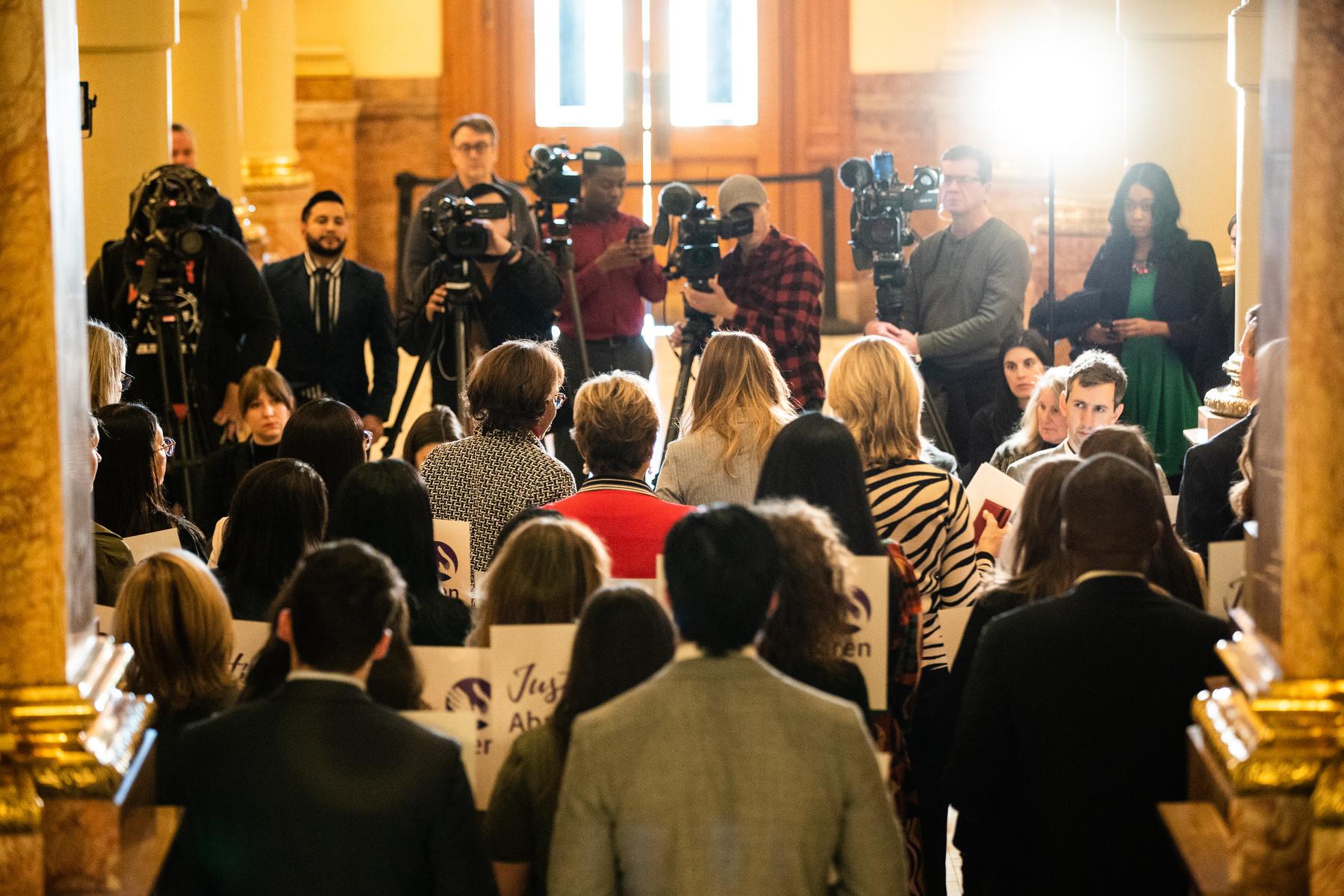Protesters in Pueblo have gathered every Sunday for more than a month at a statue of Christopher Columbus. Long revered by Italian Americans, Columbus is also seen as opening the doors to the brutalities of colonization. In a community like Pueblo, which is rich with both immigrant and Native history, the conversation about the explorer and his legacy has gone on for a long time.
One of the organizers of the protests is a 28-year-old Native dancer and rapper named T-Roze. One of her songs features Christopher Columbus and a woman revolutionary.
The lyrics:
"Every Columbus Day it feels like her soul could bleed; the only thing she can't hide the pains hidden beneath. Intergenerational traumas, wounds cut deep but despite the odds against her she'll never retreat."
Tziavii Stevens is T-Roze's real name. She identifies as Chicana and Native American and has been one of the organizers of the protests in Pueblo. She says she wrote the autobiographical song called "Revolutionary" three years ago when testifying about the Columbus Day holiday in front of the Colorado General Assembly.

"My son is half Caucasian," she told KRCC. "So he's got a little bit of everything. But I just want him to not have that statue there."
She explains that her son's life might be different because he doesn't look like her. But, Stevens says, "I've had a rough life at times for being a brown woman. And I want better for him, but I do want him to speak for everybody."
At the turn of the twentieth century, Pueblo and Southern Colorado were both big draws for Italian immigrants under the promise of work.
Dr. Fawn-Amber Montoya directed the Chicano Studies Program at CSU Pueblo. Now, she's an associate dean at James Madison University in Virginia. Pueblo, she says, was a center of Italian American culture in the region. At that time, "there were people coming from the United States who are Italian going back to Italy and saying, 'Hey, you should come to Southern Colorado.'"
Those who came found work in the steel mill and coal fields in the area.
Italian Americans also farmed in the area. One even developed what became the famous Pueblo Chile.
By 1922, according to History Colorado, 1 in 5 Coloradans was Italian American.
Which brings us to the statue of Christopher Columbus in Pueblo.

It's a bronze bust and was designed by an Italian sculptor and installed in 1905. Nationally, the Sons of Italy was formed the same year to provide support for newly arrived immigrants.
The statues of Columbus installed in Pueblo and elsewhere, according to historians, became partly a way for the new Italian immigrants to say, we are American. We are connected to the origin story of America.
But Montoya says the place they arrived to had its own deep history which complicated the story of Columbus.
"Southern Colorado had been Mexico, had been Spain, had been [Indigenous]," she says. "So you have this time frame after 1848 where the land is contested in the courts and what happens, at least in Southern Colorado, is a lot of people who were already living in this region ended up displaced from their lands."
And that's partly why the statue means so much to so many. Montoya says that for those who oppose the statue, it's a matter of belonging.
"We belong here, right? And we belong here not in the same way that the Italians claim it but we belong here because it's literally our blood that has been spilt on this soil."

The Sons of Italy in Pueblo continues to push to keep the statue where it is. The organization declined a request for an interview but posted the following on their website:
"Your grandparents built a monument to a great explorer out of thanks and respect for opening the pathway to the New World for ALL immigrants."
The statement goes on to say that it's up to each generation to "to STAND, not APPEASE, not CAVE, not CAPITULATE to those dark forces that seek to destroy America and our way of life."
Pueblo's mayor Nick Gradisar is looking to bring in a mediator to help the two sides come to a solution. And Tziavii Stevens, the rapper known as T-Roze, says she's agreed to be part of the group.
There is a special Pueblo City Council meeting scheduled for Thursday aimed at considering a contract for a mediator. As Gradisar told KRCC, it's important to identify the issues and concerns around the statue, "taking into consideration that cultural history of Pueblo, that tolerance in Pueblo, that accepting of all kinds of culture from all over."
Editor's Note: The original quote from Dr. Montoya in the audio says, "Southern Colorado had been Mexico, had been Spain, had been Spanish." After this story aired, Dr. Montoya contacted reporter Tracy Wahl to indicate she meant "Southern Colorado had been Mexico, had been Spain, had been Indigenous." The text of the story has been altered to reflect this change.









